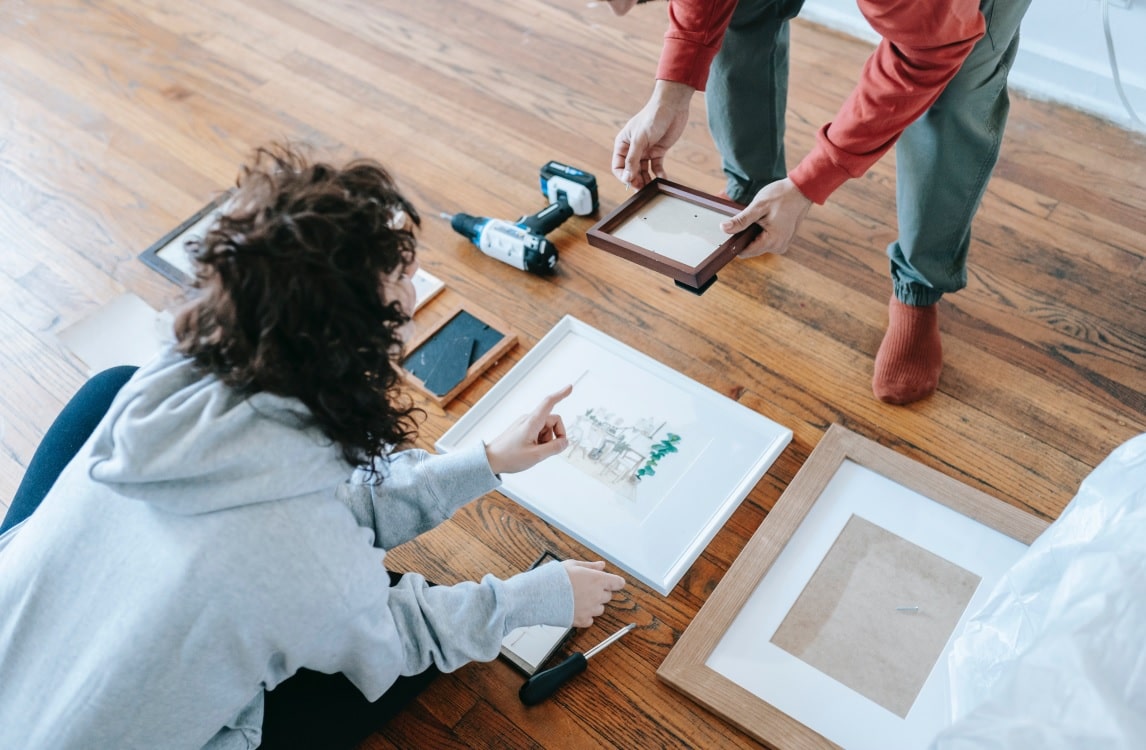Packing all your belongings is already a complicated task with just your everyday items. It becomes even more daunting when handling any precious artwork or photos you might want to take with you. Not only can these items be large and unwieldy, the items meant to protect the painting or photo – the frames and glass – can get damaged during the move. The last thing you want to deal with after a big is picking up broken glass and splintered wood.
To ensure your artwork and photos arrive at your new home safely, follow the steps below. Once you’re done packing, make sure to hire a professional NYC moving company who knows how to handle fragile items.
Purchase Appropriate Supplies
It might sound like a no-brainer, but you’d be surprised how many people try to skimp on buying supplies. After all, moving isn’t cheap so people try to find any area where they might be able to save some money. However, if you don’t invest in quality supplies you could easily end up with damaged items. Essentials for packing your art include:
- Bubble wrap or a blanket for protection
- Painter’s tape
- Appropriately sized boxes. Choose boxes that are slightly larger than the frame you’re packing
- Shipping tape to close the boxes
- Sharpie to label the boxes
- Packing paper to fill the empty space in your box.
- Cardboard corner protectors
Try to avoid packing multiple canvases together as it can lead to scratching, puncturing, or other damage. You can generally use standard sized boxes for small and medium sized canvases, but if the pieces of art are priceless, you might want to consider purchasing specialty boxes. When buying boxes, choose ones that are slightly bigger than the artwork itself and then fill in the gaps with bubble wrap or leftover packing paper.
Take Your Time When Wrapping
Much like packing your other fragile items like glassware and ceramic bowls, you want to set aside some time to properly wrap and pack your artwork. Before you even start wrapping, you’ll want to find a clean and flat area of your house where you can pack your pieces. Once you’ve designated an area of your house, put down some bubble wrap or a blanket on the ground for cushioning.
Before you put your artwork on the cushioning, measure out enough packing paper or bubble wrap to fully cover the entire front and back of the piece and then lay this down first. After that, you can put your canvas down. If your artwork is behind glass, use painter’s tape to place an X across the glass. This will stop the glass from completely shattering or moving around too much if it breaks.
If your artwork doesn’t have glass on it, protect the painted face with a few layers of plastic wrap or palette wrap. Don’t forget to add the cardboard corner protectors to the frame for extra protection.
Once your artwork is protected, you can then wrap it up with the paper or bubble wrap you put down earlier. Secure the wrap with packing tape all the way around the frame both lengthwise and widthwise. Do this for each piece you have for best results. Once everything is properly protected, put it in the appropriate boxes and then use the remaining packing paper or bubble wrap to fill in the empty space. Test the box a few times by gently moving it a few times. If you notice any shifting, add more padding.
Seal and Label Your Boxes
Once everything is secured in the box, it’s time to seal everything up. Use your shipping tape and seal the box closed. Feel free to add multiple layers of tape to ensure it doesn’t accidentally open during the move. Use as much tape as you need to make sure the seal looks sturdy.
After that, mark the boxes with its contents, descriptor, and its location. Don’t forget to also label the box fragile and include an arrow to show which side should face up. In general, you want to keep the packed picture on its side, as this will allow the artwork to absorb pressure better so label accordingly. If you’re doing a DIY move, wedge the paintings between two heavy objects to prevent the boxes from shifting during the move.
Hire Professional Movers
Sure, the DIY route might be cheaper initially, but you likely don’t have as much experience as professional movers when it comes to loading up and organizing a truck. Let’s face it, moves can be chaotic and it’s all too easy to lose track of boxes. Your brother might have the best intentions, but he likely won’t treat your belongings with the same level of care as reputable moving companies.
Professional movers have years of experience of packing to moving a variety of objects including precious artwork. They know not to put other boxes on top of your canvas boxes and the best placement for your artwork. You just need to make sure the labels are clear and easy to read and they will take care of the rest. This gives you the freedom to focus on your other moving tasks and not worry about opening your canvas box and seeing a damaged painting.
Make Your Next Move With NYC Great Movers
It doesn’t matter what you’re moving or where you’re headed, NYC Great Movers can do heavy lifting. Our experienced staff are both careful and efficient when it comes to moving. And if you don’t want to pack your fragile items, then we can help you out on that front too. Just give us a call and let us know what you need. We’ll provide a free quote and answer any questions you might have.
FAQ
How do you pack paintings and artwork for storage?
Use breathable materials like tissue paper, blankets, and wood crates if you plan on storing your artwork for longer than a month. Bubble wrap and foam is fine for moving, but these materials can trap moisture, which can damage artwork. You should also store your items in a climate-controlled unit as fluctuations in temperature can also damage your pieces.
Can you pack multiple paintings together?
While it’s not ideal, you can pack small and medium-sized artwork together. Just make sure that there is spacing between each item in the box.
Should I get moving insurance on my paintings?
If you have very expensive pieces of artwork you should absolutely get moving insurance to make sure you’re covered if anything happens. Moving companies only provide released value protection that covers $0.60 per pound per item. Since paintings are quite light, you won’t get enough money to even restore potential issues.






